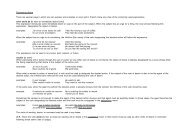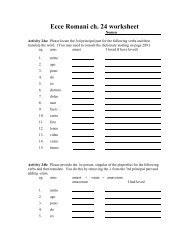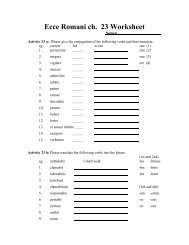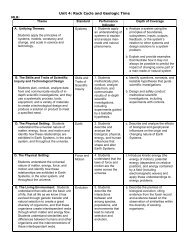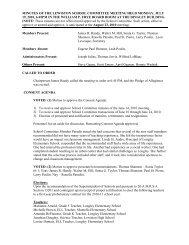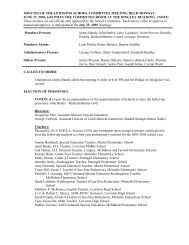Rock Cycle Crayon lab.pdf - Lewiston School District
Rock Cycle Crayon lab.pdf - Lewiston School District
Rock Cycle Crayon lab.pdf - Lewiston School District
You also want an ePaper? Increase the reach of your titles
YUMPU automatically turns print PDFs into web optimized ePapers that Google loves.
Name __________________________________________________ Period ______________________ Date ___________________<br />
d. Would you expect all rock fragments in nature to be the same size and shape?<br />
e. Identify 3 weathering agents (natural ways to weather a rock).<br />
4. Once rock fragments have been created, they are usually moved (eroded) by some force of nature like<br />
gravity and dropped in a new location (deposition). Here you will act as a depositional force.<br />
5. Each <strong>lab</strong> partner, in turn, should move (erode) and lay down (deposit) the rock fragments in a neat pile<br />
in the center of the foil. Set each new pile on top of the previous ones.<br />
6. Answer the following questions:<br />
a. Describe the shape and size of spaces between your rock (crayon) pieces. Are they large or small<br />
and irregular or regular shaped?<br />
b. What happens to the sediments during erosion?<br />
c. Identify 3 erosion agents.<br />
d. What happens to the sediments during deposition?<br />
7. This part of the simulation requires you to understand the cementation process. Spaces between the<br />
fragments are reduced in size by pressure (compaction) and filled in with cementing agents<br />
(cementation). This simulation will not add cementing agents. It will only simulate compaction. The<br />
compaction process occurs as sediment layers are continually covered by new layers of sediments. The<br />
lower layers become compacted by the weight of the new layers above.<br />
8. Carefully fold the loose layers of crayon shavings inside the aluminum foil creating a packet.<br />
9. Press the packet between the palms of your hands and press firmly. You can also place the packet on the<br />
table, put your palms of your hands on the top of the packet, and press down. This will compact your<br />
weather and eroded rocks (crayon shavings).<br />
10. Answer the following questions:<br />
a. Describe the compaction. Are the sediments tightly or loosely compacted?<br />
<strong>Rock</strong> cycle simulations 2



